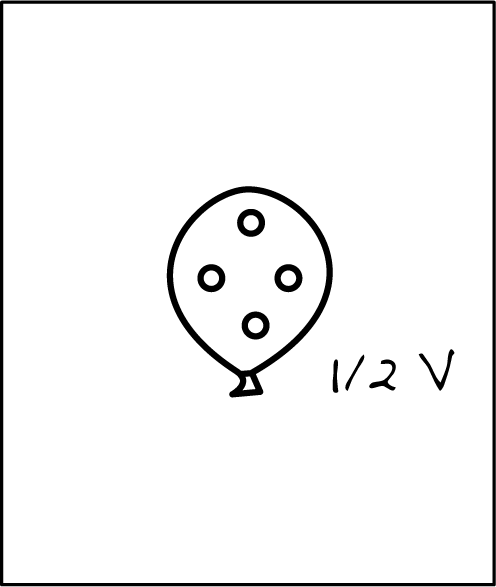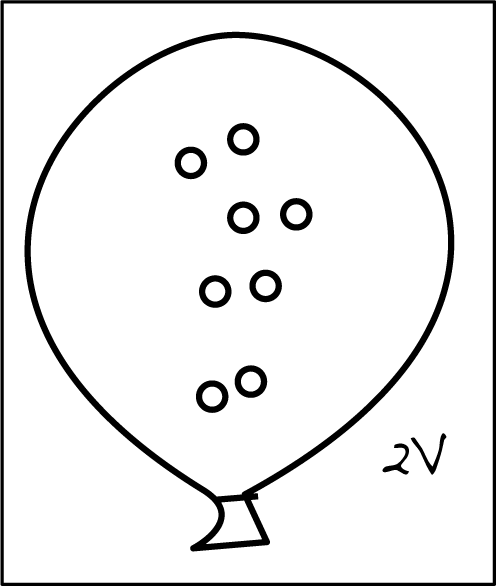Study Guide
Field 138: Science (7–12)
Sample Multiple-Choice Questions
Expand All Answers | Collapse All Answers
The following reference materials will be available to you during the test:
ConstantsPeriodic Table
Subarea 1—Teaching and Learning of Science
Objective 001—Learners and Learning Environments
1. In a diverse classroom, a teacher presents a lesson on temperature and pressure as part of a sequence on models of matter. The teacher shows an initial phenomenon where covering a lit candle with a jar extinguishes the candle and draws dyed water up into the jar, as shown in the diagram.
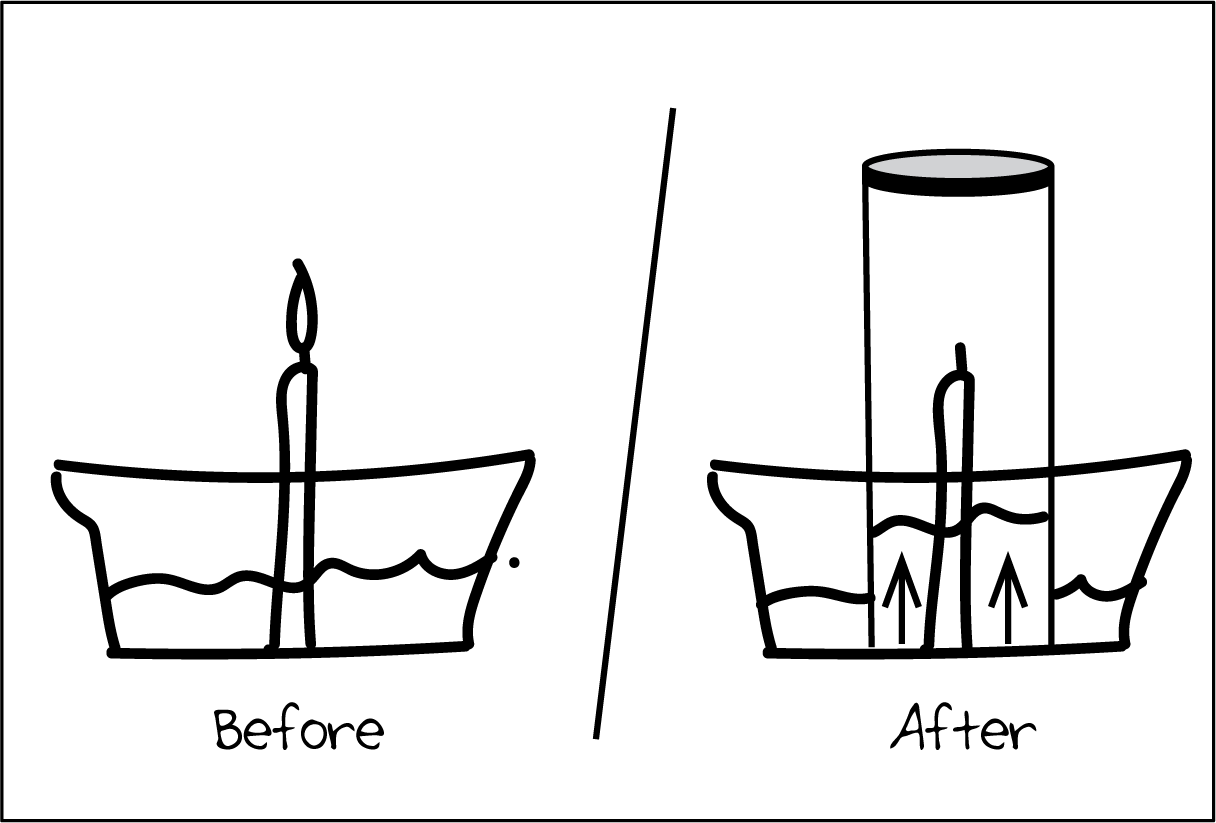
There are two sides to the diagram: before and after. In the before side, there is an uncovered lit candle placed upright in a bowl of water. The bowl is partially filled with water and the lit portion of the candle extends well above the rim of the bowl. In the after side of the diagram, a cylindrical container encloses the candle. The candle has been extinguished and water has risen inside the cylindrical container relative to the rest of the water in the bowl.
Students discuss their observations and initial understandings in pairs. The teacher then asks students to share their thoughts, which the teacher will record on a digital board. A student who often dominates classroom discussions offers a detailed initial explanation. To provide all students with the opportunity to express their thoughts, the teacher should use which of the following talk moves to promote an inclusive, high-quality class discussion?
- "Would someone else paraphrase what was just said?"
- "Keep going. Can you elaborate on what you just said?"
- "You are mostly there. There are a few small errors to fix in that thought."
- "That is possible. Who else has ideas or questions about what we observed?"
- Answer. Enter to expand or collapse. Answer expanded
- Correct Response: D.
Objective 002—Content Pedagogy
2. At the beginning of a unit on Earth's systems, students in an Earth and space science class are working to explain patterns of atmospheric circulation. The teacher reflects on student writing that reveals most students believe clouds are made of water vapor, rather than droplets or ice crystals. The teacher should assign which of the following additional investigations to support students' sense-making?
- condensing liquid out of transparent air
- using distilled water to grow snowflakes
- calculating the rate at which water evaporates
- measuring the boiling and freezing points of water
- Answer. Enter to expand or collapse. Answer expanded
- Correct Response: A.
Objective 003—Impact on Learning
3. At the beginning of a lesson sequence on energy and energy transfer, the teacher of an advanced physics class asks students to analyze the mechanical energy transfer for a toy frog that jumps straight up in the air. The teacher assesses student understanding of energy transfer by asking what type of energy builds up in the frog's legs prior to the jump. One student quickly responds, "There is potential energy stored chemically in the legs of the frog when the spring is compressed." Which of the following instructional strategies is most likely to give the teacher opportunities to provide rich feedback to student ideas on this topic?
- asking the class to identify one correct and one incorrect part of the student's statement
- explaining that mechanical energy is not a type of potential energy that they will need to calculate
- directing students to write entries in their own science journals based on the concepts in the student's statement
- forming student pairs to discuss the student's statement about potential energy while circulating to ask questions of each group
- Answer. Enter to expand or collapse. Answer expanded
- Correct Response: D.
Subarea 2—Professional Knowledge and Skills for Science Teachers
Objective 006—Specialized Content Knowledge for All Science Teachers
4. Students in an introductory Earth science class investigate the impacts of glaciation on local topography as a part of their unit on Earth's systems. The class has completed lesson sequences focusing on phase changes, the rock cycle, and the hydrological cycle. The teacher plans to have students apply knowledge from these units to the current investigation. During this investigation, students observe the following photo of an erratic boulder.
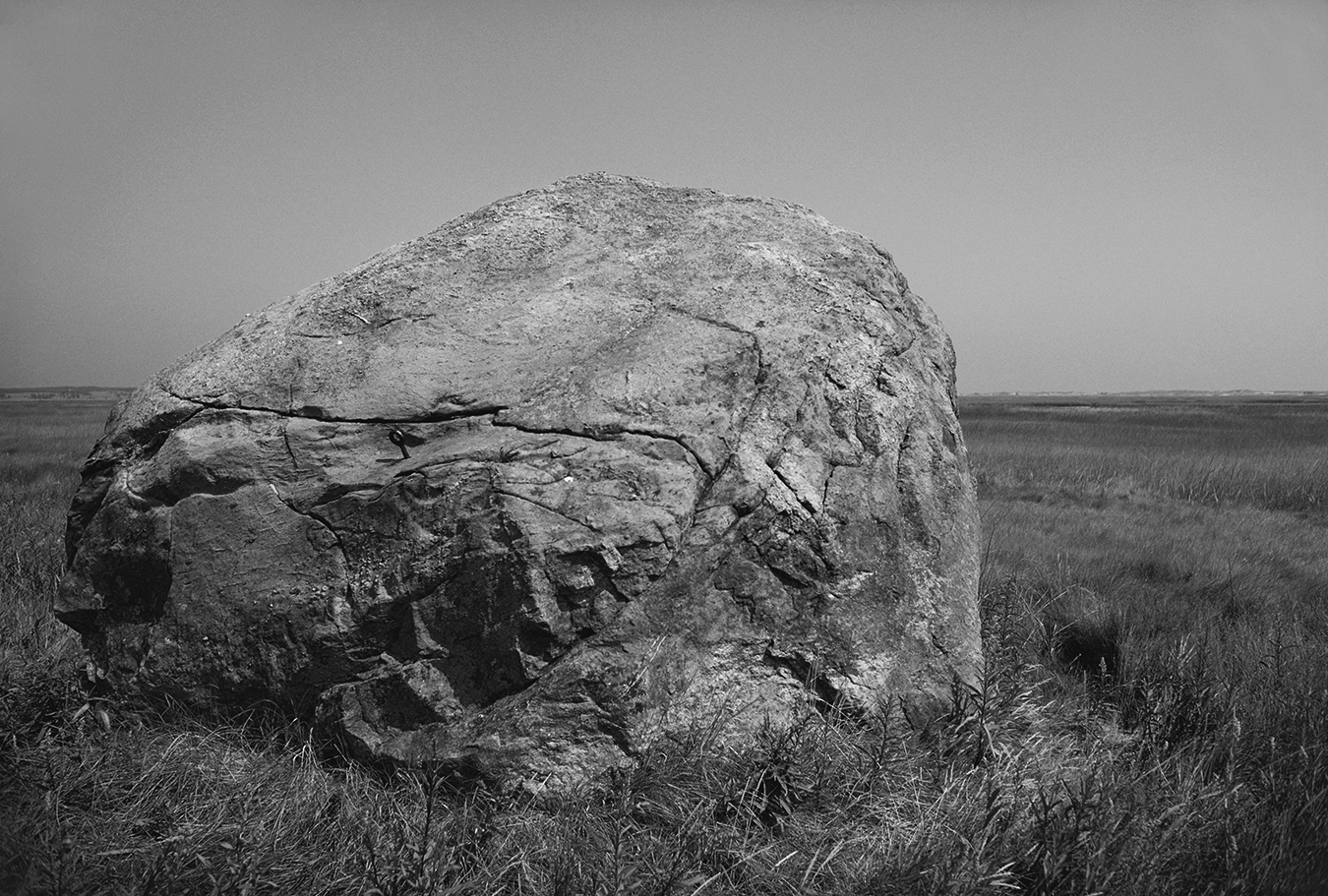
A large boulder sits, partially buried in the ground surrounded by a field of grass.
Students select historical maps, climate data, and photos of local landscapes to launch discussions and develop small group models to explain this phenomenon. In later lessons, they will explore similar evidence to determine how other landscapes came about.
The teacher uses the following prompt in an exit ticket. A student response is also shown.
Exit ticket prompt:
Use your background knowledge and all evidence you saw today to explain the most likely way this boulder came to be in its current location.
One student's response:
As the glaciers retreated, rocks like this boulder sometimes got dropped out of the bottom. This boulder is really large, which is why I think it is here in the middle of a field with no other boulders around it. We looked at historical maps and saw that there were glaciers in this area. We also looked at climate data that showed it was cold, then much warmer.
Based on this response, the teacher can make which of the following claims about this student's sense-making?
- The student has grasped how rocks and minerals change over time within Earth and can help other students understand this concept.
- The student needs to grasp that matter is neither created nor destroyed, only transformed, but understands enough to move to the next lesson.
- The student needs to grasp phase changes and needs additional resources to understand how matter changes from a liquid to a gas when it heats up.
- The student has grasped the relationship between how water moves through and transforms the environment and is ready to investigate the next question.
- Answer. Enter to expand or collapse. Answer expanded
- Correct Response: D.
Subarea 4—Physical Science Content Knowledge
Objective 008—Chemistry and Physics for High School
5. Students in an advanced chemistry class study the ideal gas law as part of a lesson sequence on energy in chemical processes. The unit is organized around the anchoring phenomenon of seasonal weather changes due to atmospheric temperature and pressure. The teacher draws a model of particles of an ideal gas in a closed balloon, as shown.
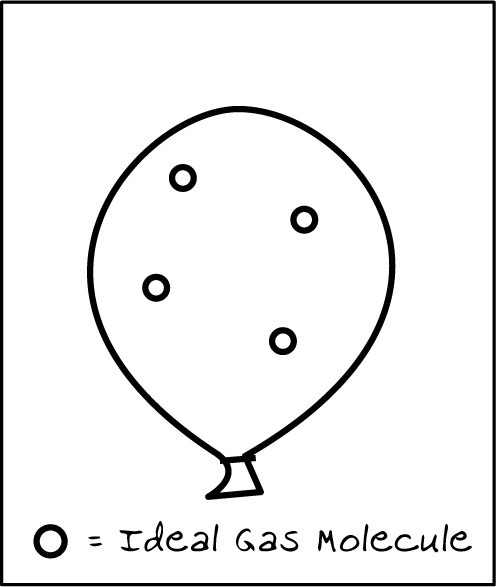
A profile of an inflated balloon containing four ideal gas molecules.
The teacher asks students, "What happens to the volume of the balloon if the number of particles of gas inside is doubled, without any significant change in temperature or pressure?" Students draw diagrams to model their predictions. Which of the following predictions most directly represents current scientific understanding?
- Answer. Enter to expand or collapse. Answer expanded
- Correct Response: C.
Subarea 5—Earth and Space Science Content Knowledge
Objective 009—Earth and Space Science for High School
6. During a unit on renewable energy, a teacher engages students in investigating and developing engineering solutions to problems in their communities. Students collect airspeed values near their homes and average their measurements over the course of a week. Students also have the option to read their home electrical meter, averaging their usage over the same week. Students that opt not to read their home electrical meter are given a value based on average community usage. This data is recorded in table form and compared to industry-standard data for commercial wind turbines. Which of the following engineering questions should initially frame this activity?
- What is the cost of electricity for everyone in class?
- Can wind turbines be the sole source of electricity for our needs?
- How does wind speed get converted into electricity in a wind turbine?
- When the wind speed has a given value, how much electricity can this turbine generate?
- Answer. Enter to expand or collapse. Answer expanded
- Correct Response: B.
Multiple Subarea Exhibit
Use the information to answer the three questions that follow.
To start a lesson sequence on how human actions affect the energy and dynamics of ecosystems, students in an introductory biology class examine two images of the same ash tree: one where the tree is healthy, and one where the tree has holes throughout it. The lesson sequence is motivated by the driving question "How can the introduction of a new species impact the dynamics of an ecosystem?"
As an investigation, the teacher shows students an ash tree near the school that has signs of emerald ash borer infestation. Students record how many insect holes they find in the wood. Then the teacher instructs students to remove some insects from the tree and take them back into the school to study. There, students research the insects, identifying them as emerald ash borers. Later, students return to the tree, count the number of holes created by emerald ash borer adults and larvae, and make observations about the apparent health of the tree. At the end of the unit, students watch a short video informing them that emerald ash borers are insects that were historically only found on ash trees in Asia prior to their accidental introduction to North America in the early 2000s, where they have subsequently spread across the United States. Finally, students analyze data on the health of North American ash trees before and after emerald ash borer invasion.
At the end of the lesson that includes the short video and data analysis, the teacher presents an exit ticket. The ticket and a typical response are shown.
Write one thing that you have learned about the emerald ash borer.
They are very pretty but they destroy the tree over time.
Objective 004—Safety
7. After researching emerald ash borers, the teacher recognizes that they will not be harmful to students. Which of the following safety concerns is most significant for this investigation?
- The investigation may allow some emerald ash borers to spread from the affected tree to unaffected trees nearby.
- The presence of many emerald ash borers in the same location may attract their local, natural predators.
- The procedure may cause some emerald ash borers to perish before the investigation is concluded.
- Some emerald ash borers may infest wooden structures in the school.
- Answer. Enter to expand or collapse. Answer expanded
- Correct Response: A.
Objective 005—Professional Knowledge and Skills
8. The teacher realizes that the exit ticket question does not encourage students to reflect deeply on the lesson including the ash borer video and data analysis. Which of the following direction lines, if included in the exit ticket, would most accurately assess a student's current sense-making of the lesson sequence?
- Make a claim using evidence from the unit about the life cycle phase during which the emerald ash borer can cause the most damage to an ash tree.
- Make a claim using evidence from the unit about whether or not the emerald ash borer is an invasive species in Michigan ecosystems.
- Make a claim using evidence from the unit about how the emerald ash borer arrived in Michigan ecosystems.
- Make a claim using evidence from the unit about how the emerald ash borer impacts the food web.
- Answer. Enter to expand or collapse. Answer expanded
- Correct Response: B.
Objective 007—Life Science for High School
9. At the end of the lesson sequence, the students read and analyze data from case studies and compare the emerald ash borer to other species that have also been able to quickly spread into new habitats. This activity should lead students to discover that the species' ability to cause continuous ecosystem disruptions is primarily a result of which of the following factors?
- long periods of weather conducive to mating
- less adapted for the new conditions
- wide variety of potential hosts
- lack of natural predators
- Answer. Enter to expand or collapse. Answer expanded
- Correct Response: D.
